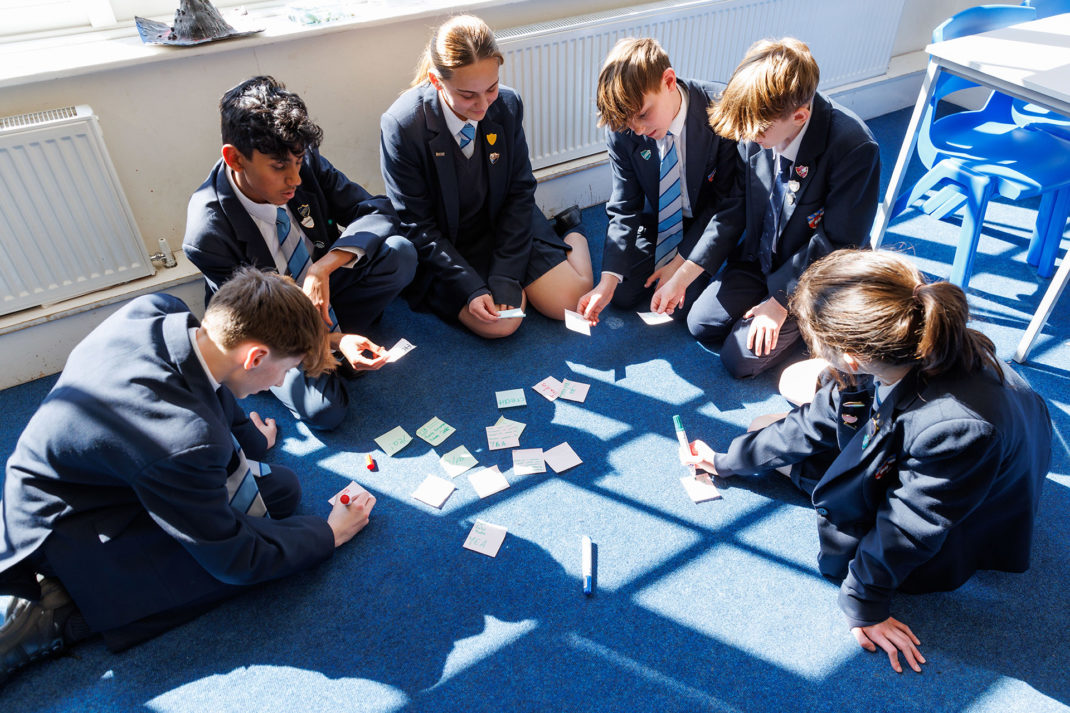Out of Touch
By
4 years ago

Catherine Milner argues that we ignore the benefits of children working with their hands at our peril

The National Curriculum for Art and Design states that primary schools are not required by law to teach ‘pencil, charcoal, paint or clay’.
Quite apart from making me wonder what is taught in art lessons, it makes me question a system that denies children the opportunity of acquiring the kind of hands-on skills that might lead onto a variety of careers beyond merely becoming an artist – and that might also make them happier.
The Children’s Society’s annual Good Childhood report this year found that, overall, 15-year-olds in Britain were among the unhappiest in Europe. Equally, the number of British children aged nine to 12 admitted to hospital after harming themselves has doubled in the past six years. Social media, coupled with the social isolation brought on by the pandemic, is often blamed for causing this epidemic of anxiety and sadness among the young.
Yet the Government doesn’t seem to have considered how, by simply changing the National Curriculum in Art and Design so that children routinely spend two or three hours a week learning how to make a painting, pot or indeed anything at all by hand – this situation could be remedied.
There is ample evidence that making art helps overcome mental health problems; it lowers cortisol levels, calms the amygdala and interrupts the cycle of stress and emotional burnout that can lead to neurological and mental imbalances. The World Health Organisation recently commissioned a report from the University of London which traced 7,558 children from the age of seven and concluded that activities such as crafts, painting and drawing were associated with a lower risk of social and behavioural maladjustment by the time they were aged 11.

Even the Department for Culture sees its benefits. A report it published in 2010 stated that ‘participation in structured arts activities can increase cognitive abilities across all disciplines by between 16 and 19 per cent’. But it is a notion that today’s Department for Education stubbornly ignores.
Instead, teachers are given only 11 hours’ coaching in how to teach art during their three-year PGCE training course; of which just two hours is devoted to learning how to teach practical art skills.
Fine art graduates, who you might expect would be lining up to teach art in schools, are not in a much better position. The disciplines of oil painting, observational drawing or modelling in clay or wood, are relegated to the dustbin of history by many if not most major art schools.
Jobs teaching art and design in schools may be increasingly thin on the ground for them anyway. According to a report by the Department of Education this year, there has been an eight per cent drop in the amount of art teachers in UK schools in the last ten years and a whopping 48 per cent drop in those teaching design and technology.
Teachers say that children aren’t interested in making art any longer; and the 33 per cent drop in take up of GCSE art in the last ten years possibly bears this out.
But whether they are not interested because art in the digital age is simply too lacking in razzamatazz to attract them or whether they have lost heart having never been taught sufficiently well to create an artwork good enough to convince them it is a subject worth pursuing, is the moot point.
Either way, they are losing touch with touch itself and the many ramifications of this we will only see in the poor design of our buildings and cars as well as bad surgery, bad haircuts, paintings and sculptures in the decades to come. And in the booming numbers of unhappy young people.
Catherine Milner is Chief Curator of Messums art gallery
READ MORE FROM AUTUMN/WINTER 2021
Bold Voices | Empower Our Children



